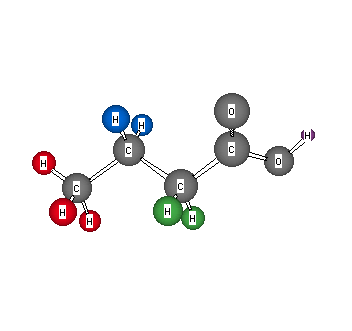Formula: C4H8O2
Answer: n-Butyric Acid (Butanoic Acid)
Chemical Shift Assignments:
1H NMR: δ 0.95 (t, 3H, J = 8 Hz), 1.64 (sextuplet, 2H, J = 8 Hz), 2.31 (t, 3H, J = 8 Hz), and 11.92 (broad singlet, 1H)
13C NMR: 180.85, 36.35, 18.47, and 13.71 ppm
The formula indicates a single degree of unsaturation. The broad 1H singlet at δ 11.92 indicates a highly deshielded hydrogen. This datum and the 13C signal at 180.85 ppm indicate a carboxylic acid (-CO2H) group is present. This leaves C3H7. The 13C NMR spectrum indicates three additional carbons. If the structure were isobutyric acid, there would be only two additional carbon signals. Thus, the structure is n-butyric acid. The 1H NMR spectrum coupling pattern fits this assignment. Compare with this example to see the difference between the normal and branched chain.
Locate the signals for n-butyric acid in the 1H and 13C NMR spectra of the extract of the fruit of the ginkgo tree. Expand the 13C NMR spectrum to resolve upfield and downfield singlets. How many carbons are present in the other component of the extract? Go here for the answer and here if you are desperate. Return to Menu.
 |
oxygen-orange |
|---|